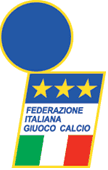Italian Football Federation
Homepage: /
Rules and regulations: /en/86/3827/Norme.shtml
History:
Aside from its marked success in the international sporting scene, Italy’s football governing body, the Italian Football Federation or the Federazione Italiana Giuoco Calcio (FIGC), is also known for its colorful personalities, episodes, and appearances.
One of the founding members of both FIFA and UEFA, FIGC oversees the Italian football league and the national team. Indeed, FIGC is instrumental to team Italy’s impressive record of three World Titles in 1934, 1938, and 1982.
FIGC has had a long journey to becoming what it is known today. Just when FIGC was slowly recovering from the effects of the war -having won four consecutive championships until 1949 – the national team suffered a heavy blow when the team’s plane crashed, taking away Italy’s best players. FIGC also had a rough period in the 1950s when the national team failed at the World Cups in Brazil (1950) and in Switzerland (1954). This dark period in FIGC’s history was capped when they were eliminated during the qualifying rounds in 1958.
Thus, major efforts to develop the national team intensified between 1964 and 1980 when foreign players were banned from the Italian league, primarily to revive the national team. A betting scandal in 1982, however, led to the resignation of then President Franchi; and in 1994, controversies between “sacchians” and “anti-sacchians” came about. By 2003, FIGC passed stricter regulations to promote economic advantages for the amateur sector and deter violence in stadiums. 2004 was a busy and winning year for Italy, having won the Under 21 European Champions and the bronze medal at the Olympic Games in Athens.
